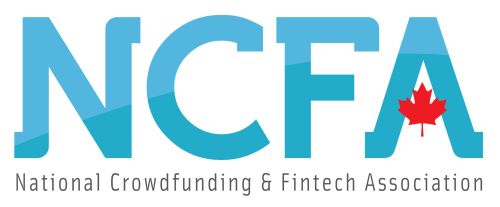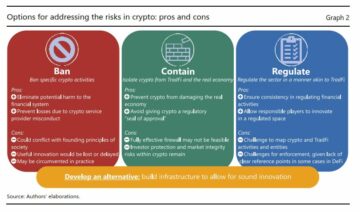April 11, 2024

 Image: Freepik/DC Studio
Image: Freepik/DC StudioData theft, phishing scams, ransomware, and hacking are some of the many cybersecurity threats players in the fintech industry face regularly. They are becoming more sophisticated and damaging as the threat environment changes and the technology used to execute them evolves. With cybersecurity experts and players in the fintech industry trying to keep up and everything changing so fast, it is worth looking at the state of cybersecurity in this industry.
Technology Use is Increasing Threat Footprints
The fintech industry is usually one of the first to adopt new technologies, with mobile devices and apps, cloud computing, and artificial intelligence all a significant part of it now. While these technologies have allowed organizations to offer better services to customers, better manage internal processes, and stay ahead of their competition, they have also increased cybersecurity risks.
These risks present significant challenges, including increasing attack sophistication, regulatory compliance difficulties, and an increased need for collaboration.
With malicious actors leveraging machine learning, social engineering, and sophisticated ransomware, financial institutions must keep up and upskill their professionals. These additional challenges have made complying with set regulations a significant issue. Fortunately, solutions like using ISO 27001 software and being ISO compliant are making financial institutions better equipped to overcome them.
Sharing information in the financial sector has also become crucial because threats to any institution present a substantial risk to all of them. Financial institutions, startups, and governmental bodies must, therefore, work together to reduce these threats.
A Departure From Traditional Motives
In the past, the primary motive for many malicious actors was syphoning user data and holding it at ransom or selling it to the highest bidder. Sometimes they sold this data to different players who used it in different ways.
However, KPMG noted in a 2021 report that the motives of malicious actors are changing.
The report noted that fraud and extortion remain serious concerns in the financial sector. Unfortunately, both allow attackers to get “more bang for their buck” for each sophisticated attack, making them a more attractive option and motive.
The same report noted that reputational damage and hackers looking for notoriety for attacking secure infrastructure or accessing massive funds from well-known institutions are additional motivations for these actors.
Different nations are also known to target the financial institutions of their adversaries. They often do this for espionage or political reasons.
Cybersecurity Teams Changing Defence Postures
Understanding the state of cybersecurity in the fintech sector, cybersecurity teams are starting to take a more defensive posture. Instead of playing defence and being reactive, they are using the same tools malicious actors use to monitor, identify, and thwart threats before they become catastrophic problems.
They are also realising workers are often the weakest link in their security protocols. It is well-known hackers do not always have to rely on their hacking skills to gain access to an infrastructure but walk through doors left open by employees. Plugging such holes by educating employees on how to do so can lead to improved cybersecurity outcomes for all financial institutions.
See: Blakes: Cybersecurity Trends in Canada: A 2023 Perspective
The state of cybersecurity in the fintech sector might look grim due to how many threats it has to deal with. The good news is that professionals are staying ahead of these threats and stopping them before they happen. Even when they do, many institutions have measures to limit the damage malicious actors can do.

 The National Crowdfunding & Fintech Association (NCFA Canada) is a financial innovation ecosystem that provides education, market intelligence, industry stewardship, networking and funding opportunities and services to thousands of community members and works closely with industry, government, partners and affiliates to create a vibrant and innovative fintech and funding industry in Canada. Decentralized and distributed, NCFA is engaged with global stakeholders and helps incubate projects and investment in fintech, alternative finance, crowdfunding, peer-to-peer finance, payments, digital assets and tokens, artificial intelligence, blockchain, cryptocurrency, regtech, and insurtech sectors. Join Canada’s Fintech & Funding Community today FREE! Or become a contributing member and get perks. For more information, please visit: www.ncfacanada.org
The National Crowdfunding & Fintech Association (NCFA Canada) is a financial innovation ecosystem that provides education, market intelligence, industry stewardship, networking and funding opportunities and services to thousands of community members and works closely with industry, government, partners and affiliates to create a vibrant and innovative fintech and funding industry in Canada. Decentralized and distributed, NCFA is engaged with global stakeholders and helps incubate projects and investment in fintech, alternative finance, crowdfunding, peer-to-peer finance, payments, digital assets and tokens, artificial intelligence, blockchain, cryptocurrency, regtech, and insurtech sectors. Join Canada’s Fintech & Funding Community today FREE! Or become a contributing member and get perks. For more information, please visit: www.ncfacanada.org
Related Posts
- SEO Powered Content & PR Distribution. Get Amplified Today.
- PlatoData.Network Vertical Generative Ai. Empower Yourself. Access Here.
- PlatoAiStream. Web3 Intelligence. Knowledge Amplified. Access Here.
- PlatoESG. Carbon, CleanTech, Energy, Environment, Solar, Waste Management. Access Here.
- PlatoHealth. Biotech and Clinical Trials Intelligence. Access Here.
- Source: https://ncfacanada.org/the-state-of-cybersecurity-in-the-fintech-industry/
- :has
- :is
- :not
- $UP
- 11
- 150
- 2018
- 2021
- 2023
- 400
- 62
- a
- access
- accessing
- actors
- Additional
- adopt
- affiliates
- ahead
- All
- allow
- allowed
- also
- alternative
- alternative finance
- always
- an
- and
- any
- apps
- ARE
- artificial
- artificial intelligence
- AS
- Assets
- At
- attack
- attackers
- Attacking
- attractive
- bang
- because
- become
- becoming
- before
- being
- Better
- blockchain
- bodies
- both
- but
- by
- cache
- CAN
- Canada
- catastrophic
- challenges
- Changes
- changing
- closely
- Cloud
- cloud computing
- collaboration
- community
- competition
- compliance
- compliant
- complying
- computing
- Concerns
- create
- Crowdfunding
- crucial
- cryptocurrency
- Customers
- Cybersecurity
- damage
- damaging
- data
- dc
- deal
- decentralized
- defence
- defensive
- Devices
- different
- difficulties
- digital
- Digital Assets
- distributed
- do
- doors
- due
- each
- ecosystem
- educating
- Education
- employees
- engaged
- Engineering
- Environment
- equipped
- espionage
- Ether (ETH)
- Even
- everything
- evolves
- execute
- experts
- extortion
- Face
- FAST
- finance
- financial
- financial innovation
- Financial institutions
- Financial sector
- fintech
- First
- For
- Fortunately
- fraud
- from
- funding
- funding opportunities
- funds
- Gain
- get
- Global
- good
- Government
- governmental
- grim
- hackers
- hacking
- happen
- Have
- helps
- High
- highest
- holding
- Holes
- How
- How To
- HTML
- http
- HTTPS
- identify
- image
- improved
- in
- Including
- increased
- increasing
- industry
- information
- Infrastructure
- Innovation
- innovative
- instead
- Institution
- institutions
- Insurtech
- Intelligence
- internal
- investment
- ISO
- issue
- IT
- Jan
- jpg
- Keep
- known
- lead
- learning
- left
- leveraging
- like
- LIMIT
- LINK
- Look
- looking
- machine
- machine learning
- made
- Making
- malicious
- manage
- many
- Market
- massive
- max-width
- measures
- member
- Members
- might
- Mobile
- mobile devices
- Monitor
- more
- motivations
- motive
- motives
- must
- Nations
- Need
- networking
- New
- New technologies
- news
- noted
- notoriety
- now
- of
- offer
- often
- on
- ONE
- open
- opportunities
- Option
- or
- organizations
- outcomes
- Overcome
- part
- partners
- past
- payments
- peer to peer
- perks
- perspective
- phishing
- Phishing Scams
- plato
- Plato Data Intelligence
- PlatoData
- players
- playing
- please
- political
- present
- primary
- problems
- processes
- professionals
- projects
- provides
- Ransom
- ransomware
- reasons
- reduce
- Regtech
- regularly
- regulations
- regulatory
- Regulatory Compliance
- rely
- remain
- report
- Risk
- risks
- s
- same
- scams
- sector
- Sectors
- secure
- security
- Selling
- serious
- Services
- set
- significant
- skills
- So
- Social
- Social Engineering
- Software
- sold
- Solutions
- some
- sometimes
- sophisticated
- sophistication
- stakeholders
- Starting
- Startups
- State
- stay
- staying
- Stewardship
- stopping
- studio
- substantial
- such
- Take
- Target
- teams
- Technologies
- Technology
- that
- The
- The State
- theft
- their
- Them
- therefore
- These
- they
- this
- thousands
- threat
- threats
- Through
- thwart
- to
- today
- together
- Tokens
- tools
- traditional
- Trends
- trying
- unfortunately
- use
- used
- User
- using
- usually
- vibrant
- Visit
- walk
- was
- ways
- well-known
- when
- while
- WHO
- with
- Work
- work together
- works
- worth
- zephyrnet












